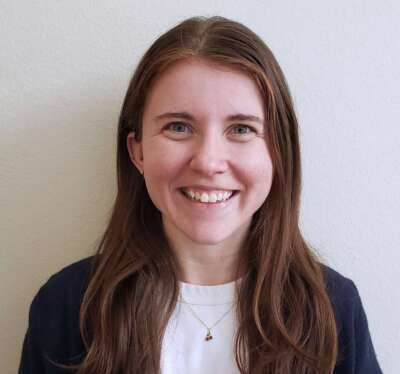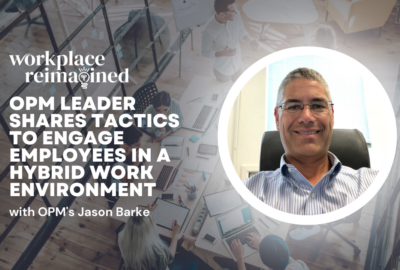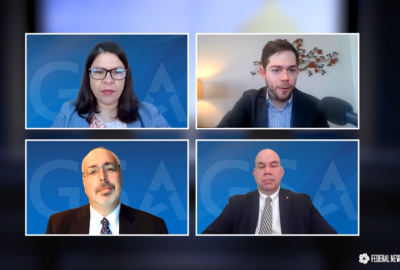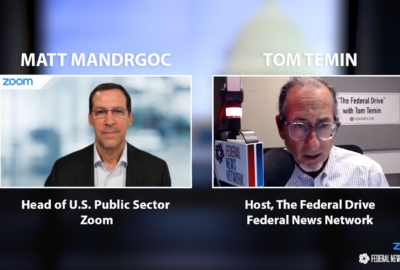Workplace Reimagined 2023: OPM’s Jason Barke on tactics to engage employees in a hybrid work environment
The way federal employees work is in transition. OPM’s Jason Barke offers details on new tools and support available to help agencies manage this change and...
The Office of Personnel Management envisions the future federal workforce as one that is “inclusive, agile and engaged, with the right skills to enable mission delivery.” But the vision doesn’t end there.
Guidance on the future of the workforce that OPM issued to agencies earlier this year also hinges on the role of hybrid work, a feature of the modern workplace that doesn’t seem to be going away anytime soon.
Hybrid work is an important piece of embracing the overall employee experience, a key part of which is engagement, said Jason Barke, OPM’s deputy associate director of strategic workforce planning, during Federal News Network’s Workplace Reimagined 2023.
“The hybrid work environment, when done well, increases employee engagement,” Barke said. “It really helps the government put resources toward work that’s most important and urgent, without permanently relocating employees or having to rehire.”
And when it comes to agility in the federal workforce, hybrid work can be a means for agencies to be able to pivot more quickly.
“We see us having this agility to be able to move around within our own workspaces,” he said.
Hybrid expand federal applicant pools
In trying to make the federal workforce more inclusive, hybrid work can help broaden applicant pools, something that has become a larger focus for agencies even in just the past few years.
“We want people to be able to see themselves working for the federal government — no matter who they are, no matter their age, their gender, their education level, their background — wherever they’re from, that they could see themselves fitting in,” Barke said.
And as for having the right skills to deliver on mission, he said emphasizing hybrid work will be critical to bringing in, retaining and continuously engaging federal talent.
“There are a lot of high-demand positions where we see a lot of fluidity, such as cyber and science, technology, engineering and math positions,” Barke said. “People are looking for hybrid [work]; when we start thinking about that, we think about where we’re going and how to facilitate sharing of critical skills.”
Getting hands-on help with managing hybrid workforce
Although hybrid work and future workforce planning are up to individual agencies, OPM isn’t simply leaving its new guidance on the table. The agency is offering resources and support to try to help federal employees thrive in a hybrid work world.
For example, OPM hosts free training sessions to offer strategies to both employees and managers in dealing with the challenges of hybrid work, which has transformed much of how the federal workplace operates.
“We really focused on those different pieces,” Barke said. “How do we communicate? How are we doing things differently now? We have distributed teams; how do we work through that? What are some of our office etiquettes? What are our norms? All of these are questions that managers are starting to have, and employees are starting to have.”
Answering those questions isn’t easy, but managers have to be especially flexible and receptive, particularly by focusing on communication with employee. And every employee is looking for something a little different, he said.
OPM’s 4 pillars of a successful future federal workforce
- Inclusive: Anyone can see themselves as part of the federal workforce.
- Agile: Agencies have employees who can adapt efficiently in a changing work landscape.
- Engaged: Employees feel connected, dedicated and enthusiastic about their work.
- Having the right skills to enable mission delivery: Closing knowledge gaps and staffing gaps so agencies can better meet their mission.
“There are different types of people who reacted differently in the hybrid arena,” Barke said. “Some felt isolation, some felt the need to be around other people. Some felt they needed greater communication, some felt they needed less communication. It was really important for managers to be able to understand their employees’ traits, what worked for them and what was effective.”
Along with the guidance and training sessions, OPM launched a new Future of the Workforce website to provide information, answer common questions from agencies and employees, and serve as a platform to consider the role of hybrid work going forward.
Preparing for more employees returning to federal offices
Although hybrid work will be around for the long haul, many federal employees will still see upcoming changes reflected in where and how they work. With many agencies about to set more in-office requirements for employees this fall, it’s important to keep communication and feedback cycles consistent, as well as think critically about how to make hybrid work bring real value for employees.
“It is a transition, and we want it to be thoughtful,” Barke said. “Think about if you typically have weekly meetings, should you schedule that meeting when people are in the office? Do we want to have a core day where everybody’s coming in for that day? We still have people coming in on different days — whether they’re coming in two days or three days a week, they still may not always see all their colleagues. So be thoughtful about that as we start planning these sessions and we start having strategy sessions, team meetings or team events. [Think about] what that looks like when they’re in the office and make time for collaboration.”
But looking even beyond hybrid work, OPM is currently working with the Chief Human Capital Officers Council to add more guidance and policy around other work flexibilities, such as “maxiflex” — a program where eligible employees can work during hours outside the standard workday when needed.
Regardless of the measures OPM takes and how agencies adapt, the key is to think strategically and proactively.
“We’ll find our way a little bit as we go — what works and what doesn’t work,” Barke said. “Workforce planning and foresight planning are really going to be critical in what we do so that we don’t say static, so that we don’t stay reactive and so that we’re really forward-thinking.”
To watch and read more from 2023 Workplace Reimagined, visit our event page.
Copyright © 2025 Federal News Network. All rights reserved. This website is not intended for users located within the European Economic Area.
Related Stories
Workplace Reimagined: GSA leaders envision the future of federal workspaces
Workplace Reimagined: Zoom’s Matt Mandrgoc on how to help people work effectively in hybrid world
Featured speakers
-

Jason Barke
Deputy Associate Director, Strategic Workforce Planning, Office of Personnel Management
-

Drew Friedman
Reporter, Federal News Network
Upcoming Events
Related Stories
Top Stories

Jason Barke
Deputy Associate Director, Strategic Workforce Planning, Office of Personnel Management

Drew Friedman
Reporter, Federal News Network
Drew Friedman is Federal News Network’s reporter covering workforce, pay and benefits. She previously worked as a producer for the program Government Matters at WJLA-TV, covering the business of the federal government. Drew graduated from the University of Virginia in 2018 with a B.A. in media studies.






